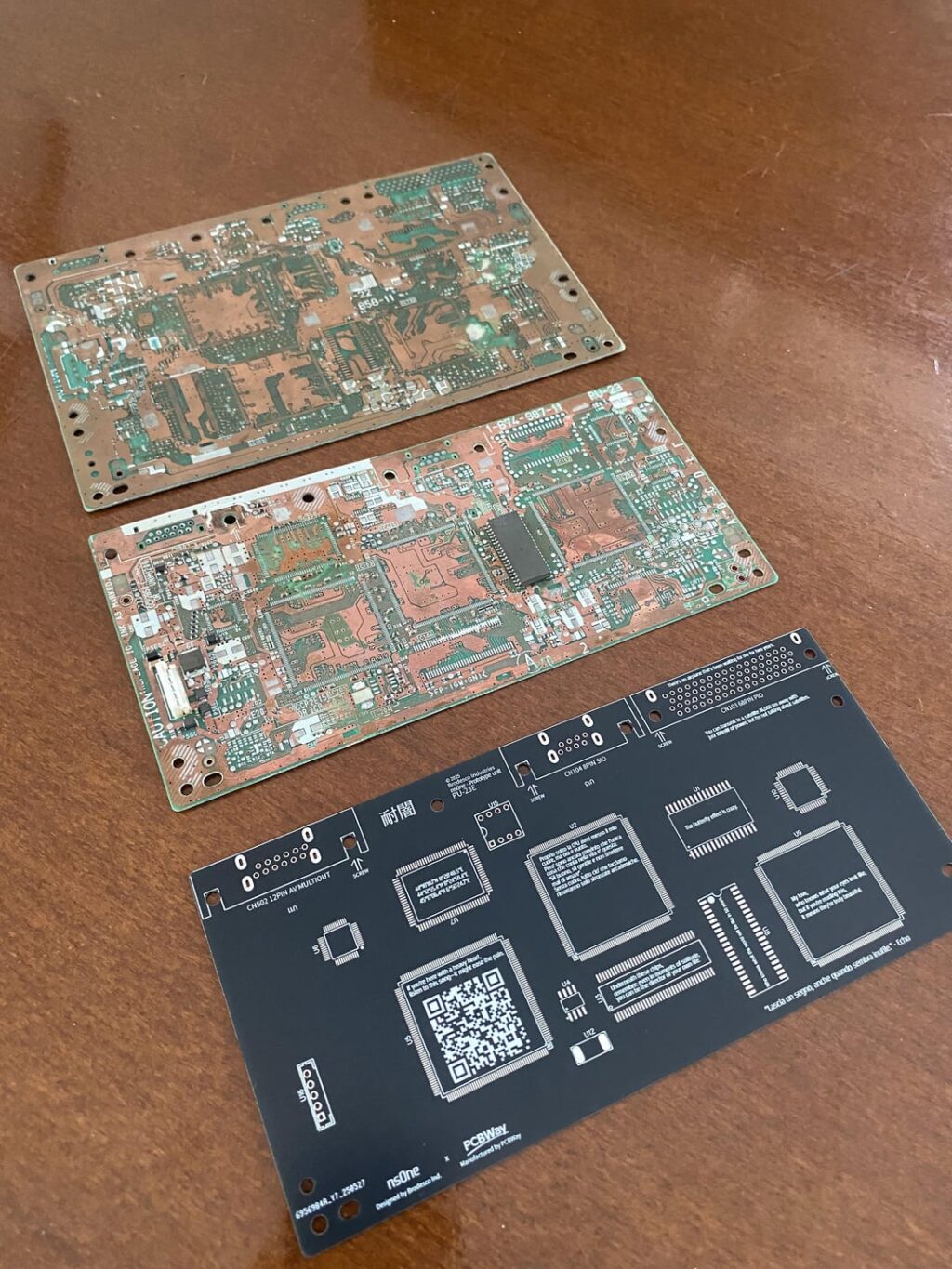The nsOne project joins a growing community of homebrew PlayStation 1 hardware developments. Other recent projects include Picostation, a Raspberry Pi Pico-based optical disc emulator (ODE) that allows PlayStation 1 consoles to load games from SD cards instead of physical discs. Other ODEs like MODE and PSIO have also become popular solutions for retrogaming collectors who play games on original hardware as optical drives age and fail.
From repair job to reverse-engineering project
To understand the classic console’s physical architecture, Brodesco physically sanded down an original motherboard to expose its internal layers, then cross-referenced the exposed traces with component datasheets and service manuals.
“I realized that detailed documentation on the original motherboard was either incomplete or entirely unavailable,” Brodesco explained in his Kickstarter campaign. This discovery launched what would become a comprehensive documentation effort, including tracing every connection on the board and creating multi-layer graphic representations of the circuitry.
Credit:
Lorentio Brodesco
Using optical scanning and manual net-by-net reverse-engineering, Brodesco recreated the PlayStation 1’s schematic in modern PCB design software. This process involved creating component symbols with accurate pin mappings and identifying—or in some cases creating—the correct footprints for each proprietary component that Sony had never publicly documented.
Brodesco also identified what he calls the “minimum architecture” required to boot the console without BIOS modifications, streamlining the design process while maintaining full compatibility.
The mock-up board shown in photos validates the footprints of chips and connectors, all redrawn from scratch. According to Brodesco, a fully routed version with complete multilayer routing and final layout is already in development.

Credit:
Lorentio Brodesco
As Brodesco noted on Kickstarter, his project’s goal is to “create comprehensive documentation, design files, and production-ready blueprints for manufacturing fully functional motherboards.”
Beyond repairs, the documentation and design files Brodesco is creating would preserve the PlayStation 1’s hardware architecture for future generations: “It’s a tribute to the PS1, to retro hardware, and to the belief that one person really can build the impossible.”


